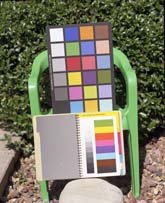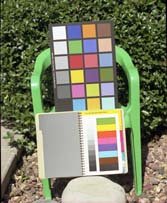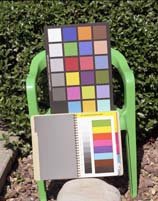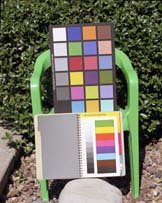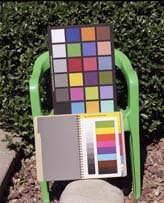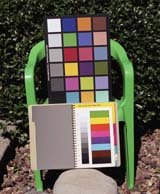I've not read the whole thread yet, but seeing as you're shooting film to scan it and I'm a hybrid guy, I'll chime in. For color negative film, most reasonably good film scanners can see and digitize the full density of the film, so the only thing you have to care about is getting what's important in the scene exposed with enough density that the important stuff isn't lost in the film fog. The red, green, and blue channels have different densities, and different density ranges from each other, so once it's developed and scanned in (ideally as a 16 bit positive transparency with gamma 1.0), you get to invert it and choose where stuff goes with photoshop levels and curves. That's the beauty of digital, you get to choose and can change it as much as you want. Once you do your initial baseline density correction so that the red, green, and blue have the same density and density ranges and any remaining color casts have been removed with curves, you'll have an image that looks flat and ugly. It's at this point that you can start to think of the zone system.
In digital, even though you scanned in at 16 bits, your display is only 8 bits and actually a lot like paper. At gamma 2.2 (which is what the vast majority of displays are), you can encode about 12 stops into those 8 bits. It's not linear, but you know what? It doesn't really matter. There's a much simpler way to deal with it that is shockingly like the zone system.
Percentages of luminance. Black is 0%. White is 100%. Divide that range up into 10% blocks, and what do you get? 10 zones. OK, so where does stuff go? This is totally subjective and up to you where you put stuff, but what I generally do is put an exposed 18% exposure gray card at 46.6% through an exposure adjustment layer, then apply a curve layer to place the other things (at that point, if I exposed reasonably well, they're already close unless the scene is really high contrast). Some general rough rules: 90-100%, light sources. 80-90%, specular highlights. 70-80%, reflected white. 50-70%, most skin tones, darker skin can dip down into the 35-50% range. Middle gray: 46.6%. 10-40%, darker tones and shadows. You start to lose discernible detail above 90%, and below 10%, so put your important stuff between those two points.
This is all very fast and easy to do with a simple curve layer in PS and results in an image that looks good and has good contrast. From there, you can add more or less contrast, warm it up or cool it down, pretty much do whatever you want with it to get the aesthetic you're going for. For exposure, I don't bother with a light meter. I use the sunny 16 rule, and when in doubt, err on the side of more exposure.
Granted, none of this really applies if you're 100% analog, but if you're scanning it in, it can be helpful.








